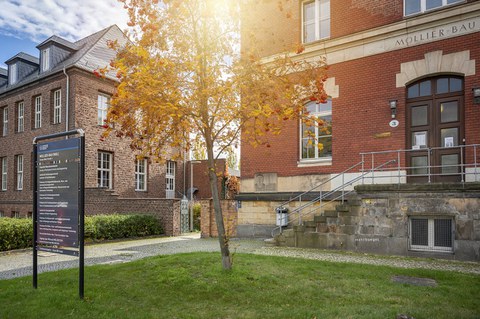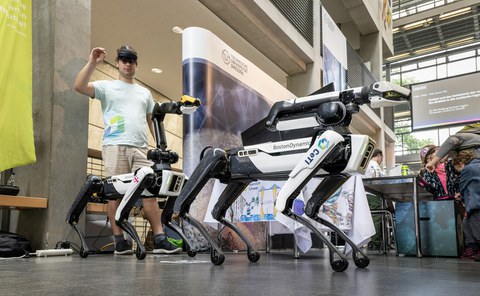TUD Basics
Before you decide to study here at the TUD Dresden University of Technology, it is first of all important to know what the TUD actually is. Sounds complicated? - But it's not! Here we explain what a university is and what is so special about the TUD.
Table of contents
What actually is a university?
A university is an institution of higher education that aims to impart, expand and disseminate knowledge. There are various disciplines ranging from natural sciences to humanities and degree programs with different academic levels. What is that again you ask?
Academic levels
Academic levels describe the different academic degrees that you can obtain in Germany.
The Bachelor's degree is the lowest and the first degree you can obtain after three or four years of study. You can then go on to complete a Master's degree, the second academic degree, which allows you to deepen your knowledge. You can also complete your studies with a diploma, especially in technical and scientific subjects. These degree programs last four to five years and are divided into undergraduate and graduate studies. If you are studying medicine, law or teaching, you will have to take state examinations at the end of your studies in order to successfully complete your degree. There is also the doctorate, with which you can obtain a doctoral degree, and the habilitation, i.e. the path to a Chair.
You can find out which degrees you can obtain here at the TUD on this page on degrees.
Research and teaching
The university is not only a place of teaching, but above all a place of research. Academic freedom prevails here. It enables teaching staff and researchers to work independently of external influences.
However, the main difference to a university is that the university is more focused on theoretical knowledge and scientific methods. You will therefore find fewer practice-oriented degree programs here, but rather theoretical and research-oriented programs.
TUD Dresden University of Technology
The Technical University was founded in 1828 and has since developed into one of the largest technical universities in Germany. As the only university of excellence in eastern Germany, it is part of a unique network of cultural and research institutions. Here you will find a brief overview of interesting facts about TU Dresden.
University of Excellence
The status of a University of Excellence gives a university like TU Dresden the opportunity to conduct top-level research, as it receives financial support from the Federal and State governments. To receive this status, a university must have at least two clusters of excellence. These are special research projects in which researchers from a wide range of disciplines are working. The research involves cooperation and networking, which strengthens the international competitiveness of the research fields.
TU Dresden's Clusters of Excellence are the CeTI - Centre for Tactile Internet with Human-in-the-Loop Interaction, Ct.qmat - Complexity and Topology in Quantum Materials and PoL - Physics of Life. These clusters entitle the TUD to apply for excellence status. This status provides the university with funding to expand research and create an outstanding research environment.
Students also benefit from the excellence status, as they can take advantage of an extended, research-oriented range of courses offered by renowned researchers and career opportunities in top-level research.
If you would like to find out more, take a look at the Excellence page.
Structure of the TUD
The management of the TUD consists of the University Executive Board, which includes the Rector, the Vice Rectors and the Chancellor. There is also the Board of Studies and the Personnel Representation Council, in which employees and students meet and discuss a wide range of topics. Central Units such as the Botanical Garden or the Dresden University Sports Center also belong to the TUD. In addition to the various departments, there is also the Central University Administration, with a wide variety of Directorates.
But the most exciting are the departments of the TUD. There are the School of Humanities and Social Sciences, the School of Civil and Environmental Engineering, the School of Engineering and the School of Medicine. These areas are in turn divided into individual faculties in which the Chairs are based. There are a total of seventeen faculties in the five areas.
On this page you will find more information about the structure and organization of the TUD.




